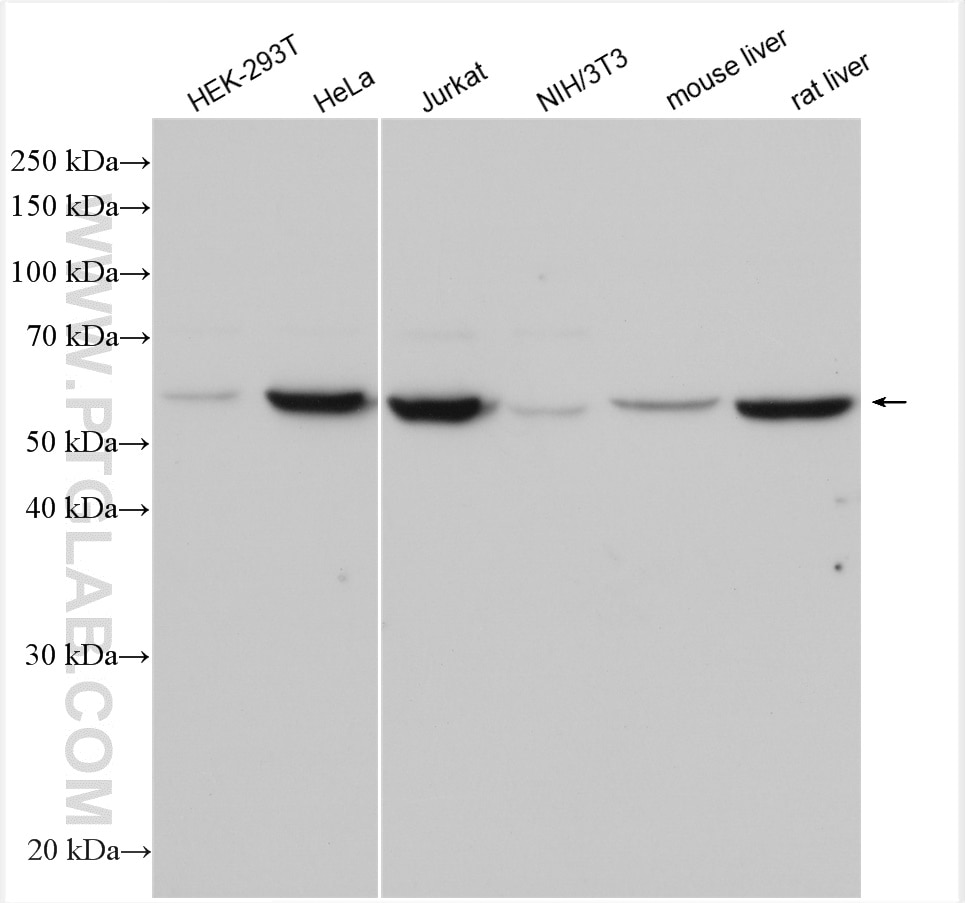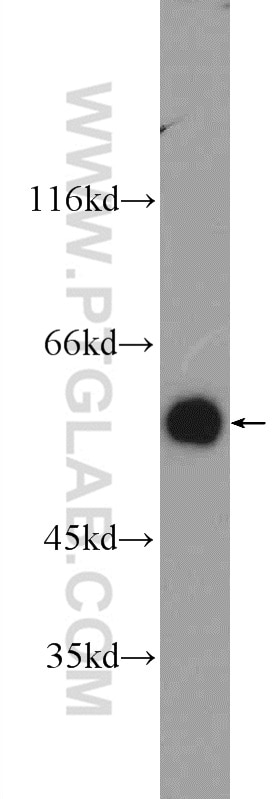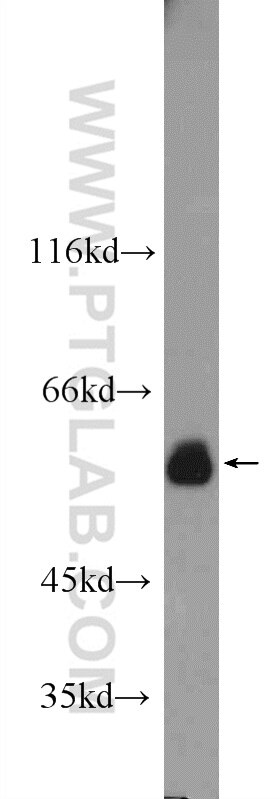- Phare
- Validé par KD/KO
Anticorps Polyclonal de lapin anti-ATL3
ATL3 Polyclonal Antibody for WB, IP, IF, ELISA
Hôte / Isotype
Lapin / IgG
Réactivité testée
Humain, rat, souris et plus (1)
Applications
WB, IF/ICC, IP, CoIP, ELISA
Conjugaison
Non conjugué
N° de cat : 16921-1-AP
Synonymes
Galerie de données de validation
Applications testées
| Résultats positifs en WB | cellules HEK-293T, cellules HEK-293, cellules HeLa, cellules HepG2, cellules Jurkat, cellules NIH/3T3, cellules SMMC-7721, tissu hépatique de rat, tissu hépatique de souris |
| Résultats positifs en IP | cellules HeLa, |
| Résultats positifs en IF/ICC | cellules HeLa, cellules HepG2 |
Dilution recommandée
| Application | Dilution |
|---|---|
| Western Blot (WB) | WB : 1:2000-1:12000 |
| Immunoprécipitation (IP) | IP : 0.5-4.0 ug for 1.0-3.0 mg of total protein lysate |
| Immunofluorescence (IF)/ICC | IF/ICC : 1:50-1:500 |
| It is recommended that this reagent should be titrated in each testing system to obtain optimal results. | |
| Sample-dependent, check data in validation data gallery | |
Applications publiées
| KD/KO | See 2 publications below |
| WB | See 11 publications below |
| IF | See 2 publications below |
| IP | See 2 publications below |
| CoIP | See 1 publications below |
Informations sur le produit
16921-1-AP cible ATL3 dans les applications de WB, IF/ICC, IP, CoIP, ELISA et montre une réactivité avec des échantillons Humain, rat, souris
| Réactivité | Humain, rat, souris |
| Réactivité citée | Humain, singe, souris |
| Hôte / Isotype | Lapin / IgG |
| Clonalité | Polyclonal |
| Type | Anticorps |
| Immunogène | ATL3 Protéine recombinante Ag10279 |
| Nom complet | atlastin GTPase 3 |
| Masse moléculaire calculée | 541 aa, 61 kDa |
| Poids moléculaire observé | 61 kDa |
| Numéro d’acquisition GenBank | BC077727 |
| Symbole du gène | ATL3 |
| Identification du gène (NCBI) | 25923 |
| Conjugaison | Non conjugué |
| Forme | Liquide |
| Méthode de purification | Purification par affinité contre l'antigène |
| Tampon de stockage | PBS avec azoture de sodium à 0,02 % et glycérol à 50 % pH 7,3 |
| Conditions de stockage | Stocker à -20°C. Stable pendant un an après l'expédition. L'aliquotage n'est pas nécessaire pour le stockage à -20oC Les 20ul contiennent 0,1% de BSA. |
Informations générales
ATL3, belonging to a class of dynamin-like GTPase, was reported to mediate ER fusion. ATL3 is required for the proper formation of the network of interconnected tubules of the endoplasmic reticulum. ATL3 functions as a receptor for ER-phagy, promoting tubular ER degradation upon starvation. Mutations in this gene may be associated with hereditary sensory neuropathy type IF.
Protocole
| Product Specific Protocols | |
|---|---|
| WB protocol for ATL3 antibody 16921-1-AP | Download protocol |
| IF protocol for ATL3 antibody 16921-1-AP | Download protocol |
| IP protocol for ATL3 antibody 16921-1-AP | Download protocol |
| Standard Protocols | |
|---|---|
| Click here to view our Standard Protocols |
Publications
| Species | Application | Title |
|---|---|---|
Cell Res DNA damage triggers tubular endoplasmic reticulum extension to promote apoptosis by facilitating ER-mitochondria signaling. | ||
Genes Dev Localization of Kif1c mRNA to cell protrusions dictates binding partner specificity of the encoded protein | ||
Elife Efficient protein targeting to the inner nuclear membrane requires Atlastin-dependent maintenance of ER topology.
| ||
Neuron Profiling of purified autophagic vesicle degradome in the maturing and aging brain |












